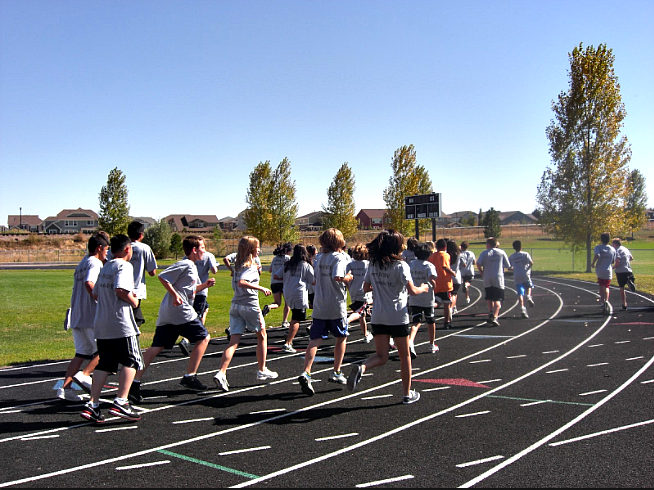Running the Mile
Running the mile: the quintessential high school nightmare. From doing laps around the field in elementary school to the pacer test in middle school to the full mile in high school, many students dread the time of the year when they have to run around in the gym for a number grade. Instead of having the semi-annual mile run, BHS should instead have a more holistic approach to testing their students’ health and physical capabilities.
There are five components to physical fitness: muscular strength, muscular endurance, cardiovascular endurance, flexibility, and body composition. Gym teachers used to measure the different components with running, the stretch test, and counting the amount of pushups/situps students could do. But in middle school and high school, the other areas are abandoned, leaving only cardiovascular tests during the year. Though student health is only measured through running, there are people who try to get out of the requirement with doctors’ notes or feel that their performance in that one area is not representative of the shape they’re in. If this is how they feel, then maybe BHS ought to take out the mile and go back to how fitness was measured in elementary school.
However, while talking to yoga teacher Ms. Bennett, she said the mile has been a topic of discussion amongst the gym teachers before and they’ve come to the consensus that the mile is the only effective way to measure cardiovascular health efficiently. With so many students, having people run the mile is a much faster way to collect results instead of individually testing students in multiple different areas. Teachers can easily figure out how hard a student tried by comparing their resting heart rate to their heart rate once they’ve completed their run. BHS also utilizes the mile instead of the pacer test as students used to only do the bare minimum when it came to testing, dropping out of the test even if they could go further. Since BHS has the track for the mile and these reasons, gym teachers choose to stick to their methods.
Perhaps if enough students voice their opinions, they can reach a compromise with gym teachers to diversify their methods of testing student wellbeing. Those who enjoy running the mile could continue this practice. For others who would rather display their stronger areas of fitness, they could go back to the more extensive fitness tests with a smaller running component.

Isabelle is currently a senior at Bethpage High School. She is a proud member of the Masquers Guild as an actor, stagehand, and director of AV. She loves...









